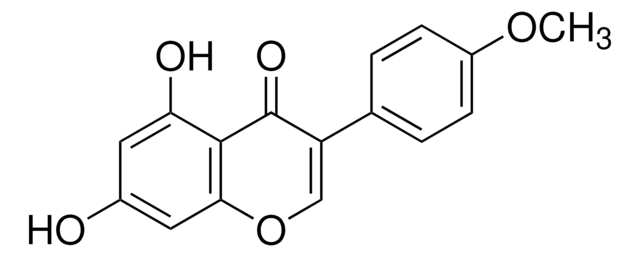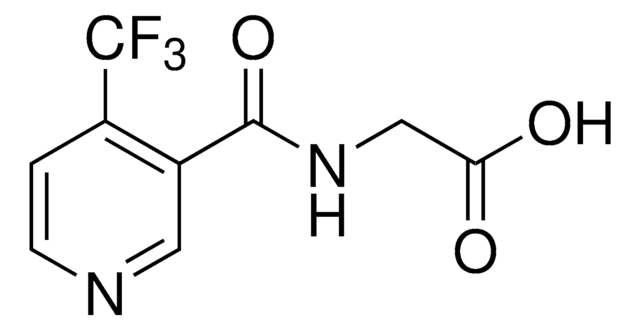D048
MPP+ iodide
≥98% (HPLC), powder
Sinónimos:
1-Methyl-4-phenylpyridinium iodide
About This Item
Productos recomendados
assay
≥98% (HPLC)
form
powder
storage condition
desiccated
color
white to beige
solubility
H2O: 10 mg/mL, clear
SMILES string
[I-].C[n+]1ccc(cc1)-c2ccccc2
InChI
1S/C12H12N.HI/c1-13-9-7-12(8-10-13)11-5-3-2-4-6-11;/h2-10H,1H3;1H/q+1;/p-1
InChI key
RFDFRDXIIKROAI-UHFFFAOYSA-M
General description
Application
- to induce oxidative stress in zebrafish embryos
- for the inhibition of glutamate uptake in mitochondria of astrocytes
- in testing cell viability using MTT (3 (4,5-dimethylthiazol)-2-yl-2,5-diphenyltetrazolium bromide) in microglia (BV2) cells
Biochem/physiol Actions
Caution
Preparation Note
signalword
Danger
Hazard Classifications
Acute Tox. 3 Dermal - Acute Tox. 3 Inhalation - Acute Tox. 3 Oral - Eye Irrit. 2 - Skin Irrit. 2 - STOT SE 3
target_organs
Respiratory system
Storage Class
6.1A - Combustible acute toxic Cat. 1 and 2 / very toxic hazardous materials
wgk_germany
WGK 3
flash_point_f
Not applicable
flash_point_c
Not applicable
ppe
Eyeshields, Faceshields, Gloves, type P2 (EN 143) respirator cartridges
Certificados de análisis (COA)
Busque Certificados de análisis (COA) introduciendo el número de lote del producto. Los números de lote se encuentran en la etiqueta del producto después de las palabras «Lot» o «Batch»
¿Ya tiene este producto?
Encuentre la documentación para los productos que ha comprado recientemente en la Biblioteca de documentos.
Los clientes también vieron
Nuestro equipo de científicos tiene experiencia en todas las áreas de investigación: Ciencias de la vida, Ciencia de los materiales, Síntesis química, Cromatografía, Analítica y muchas otras.
Póngase en contacto con el Servicio técnico














